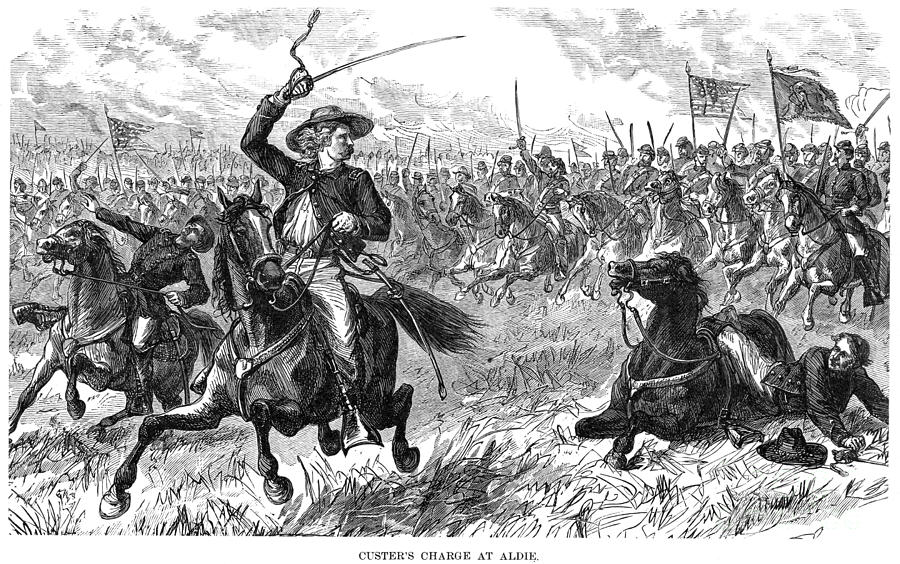The Battle of Aldie
As the armies moved north through Virginia as part of what would become the Gettysburg Campaign, General Alfred Pleasonton continued to deploy his cavalry to the west in search of the main body of the Confederate Army of Northern Virginia.
Today marks the 150th anniversary of one of the times they stumbled onto Confederate cavalry – this time under General Munford – the Battle of Aldie.
While a relatively minor engagement, it had some interesting consequences. For one, the Confederates abandoned the field after the fighting, moving back toward the west and the mountains to provide a more effective screen. They’d be pushed back even further over the next few days. This “loss” served to bolster the confidence of the Union cavalry after their good showing at the Battle of Brandy Station about a week earlier.

This battle also sparked the rise of one of the most famous cavalry commanders in American history: George Armstrong Custer. Custer was serving on Pleasonton’s staff as a Captain and was able to convince his commander to allow him to take part in the attack on this day. As the 1st Maine cavalry charged forward, the regiment’s commander fell dead and Custer took the lead in his place.
This act of bravery (combined with the fact that he was already a favorite of Pleasonton – the overall Union cavalry commander) led to Custer’s promotion to Brigadier General before the end of the month. As the youngest General in the Union army, he would lead a brigade of Michigan cavalrymen at Hanover and Hunterstown on his way to the East Cavalry Field at Gettysburg.
Of course, he’s most famous for being killed 13 years later with the rest of his command at Little Bighorn. But if not for his part at Aldie, he may never have become more than a mere staff officer.